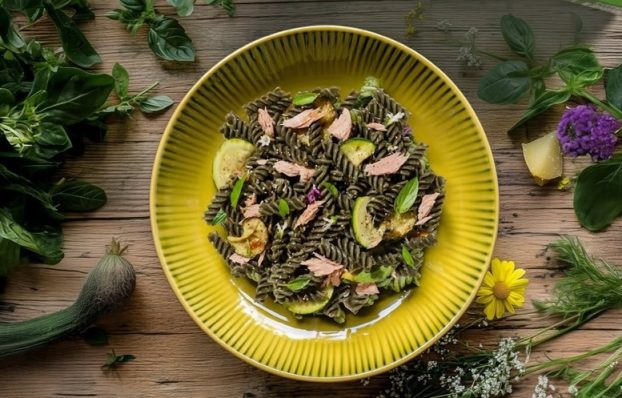Just as home meal replacements have made inroads on the grocery front for time-pressed commuters, their second cousin – ready-to-drink cocktail mixes – are starting to stand out as the big seller in Canada’s liquor stores.
And why not? It’s the same rationale – convenience – that drives the sale of both. Cocktails are trendy but who has the time to chop fruit, blend juices and crush ice every time they want to take a nip?
According to Bob Downey, director of spirits for the Liquor Control Board of Ontario (lcbo), the ready-to-drink category can be split into three segments; frozen (which usually require mixing with ice in a blender), true ready-to-drink (which range from 9% to 12% alcohol and can be poured straight into a glass over ice) and full-strength ready-to-drink (which have 36%-40% alcohol content), says Downey.
All three segments have been growing, he says. In fact, ready-to-drink sales grew 31% over the last fiscal year, ended March 31. Even more impressive, however, is the fact that sales for the first three months of this year have leaped 51% over last, according to Downey.
The exponential growth isn’t because the $12-million category has more contenders. According to Downey, the number of brands – 38 – has remained about the same over the two-year period, give or take a couple that have been delisted or brought in to take their place.
The success of ready-to-drink doesn’t seem to have come at the cost of regular spirits, either. Thanks in large part to the popularity of single malt scotch, traditional spirit sales grew last year by 2%. That may not sound like much, but the slight surge came after a good 12 years of decline, says Downey.
Sales of coolers, too, grew last year – by 7%. All of this when Statistics Canada figures indicate that per capita consumption of alcohol is declining.
Perhaps it’s just women who are drinking more. Downey says that the typical ready-to-drink consumer is female, aged 19-29.
That’s certainly the case with Kittling Ridge’s Classic Cocktails, which are available in British Columbia, Ontario, Nova Scotia and New Brunswick. According to Christine Comeau, marketing manager for the Grimsby, Ont.-based winery and distiller, Kittling Ridge tries to create products for entry-level consumers, who are less likely to have formed any brand loyalty.
By getting them to try Kittling Ridge products from the start, the thinking goes, they’re more likely to graduate to the company’s traditional wines and spirits.
Kittling Ridge launched its KR Classic Cocktails in 1994. So successful are the cocktail line’s sales that, this year, the company doubled its flavor options to eight, including Singapore Sling, Zombie and Bahama Mama.
Comeau says part of the appeal of ready-to-drink cocktails is that they are idiot-proof – one just has to shake the contents and pour over ice.
United Distillers & Vintners’ T.G.I Friday’s brand of cocktails, on the other hand, have seen a broader advertising effort. According to Jill Burgin, category manager for the Toronto-based company, T.G.I. Friday’s cocktails have received an extensive public relations effort and have been promoted with full-page magazine ads.
The ads – with the tag line ‘Savour the Flavour’ – have appeared in such publications as Food & Drink, Cottage Life and Modern Woman.
Launched in Canada in the summer of 1996 with only three flavors, the line has branched out to include 12 different varieties, ranging from the typical Pina Colada to the not-so-typical Frozen Orange Dream and Strawberry Shortcake. The T.G.I.Friday’s line has two styles of ready-to-drink cocktails: frozen (available in 375 millilitre and 1.7 litre) and ready-to-drink (available in 750 millilitre). At first, the company expected the product to appeal mostly to a younger audience, but Burgin says research indicates that the typical buyer is, in fact, in the 25-40 age group.
‘It’s the quintessential at-home drink,’ explains Burgin. She says that the settled-down thirtysomethings are more likely to invite friends over for cocktails than bar-hopping younger drinkers.
‘They’re at home because they’ve got young kids but they still want to share something,’ she says.
And there’s also the fun factor. ‘I can teach a couple of people how to make drinks,’ she says. ‘It’s a lot of fun.’
In fact, the company’s u.s. tv spot reinforces that message. According to Burgin, the spot features some friends suggesting that everyone go out for drinks until someone has the bright idea that staying at home, with T.G.I.Friday’s, makes more sense.
The company has also tried to build momentum for the brand through in-store sampling programs, which work well, according to Burgin. She says the trial-to-purchase rate is a healthy 26%. The company has also taken a ‘blendermobile’ across Ontario this summer to get people to sample non-alcoholic versions of the lineup.
Burgin says that the older target audience might mean a slight cannibalization of the company’s traditional spirits lineup, which includes Smirnoff Vodka and Malibu Rum. ‘There’s a certain element of that,’ she says. But she adds that it’s more likely the products are opening up an entire new market, one in which people who didn’t traditionally drink spirits might now find them more appealing.























